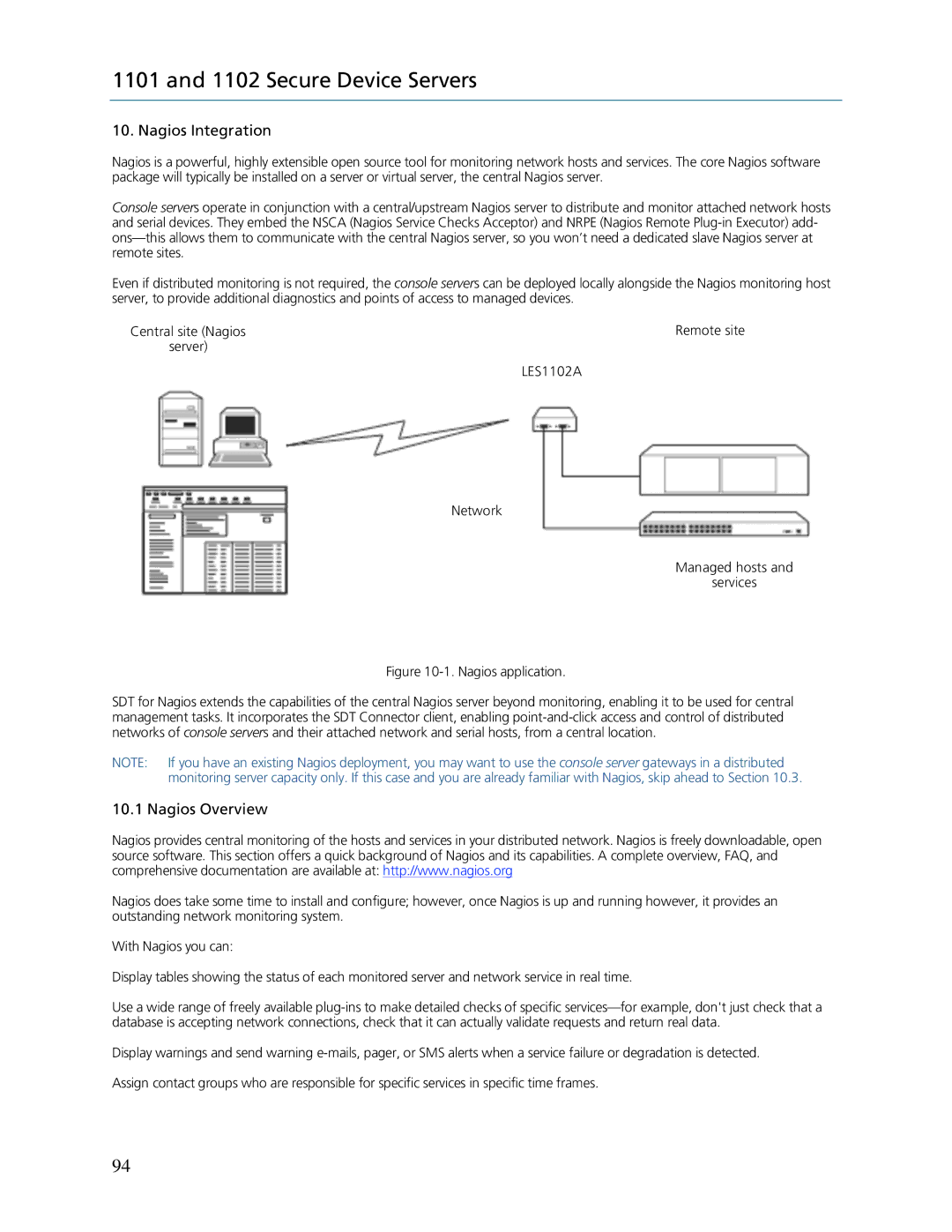
1101 and 1102 Secure Device Servers
10. Nagios Integration
Nagios is a powerful, highly extensible open source tool for monitoring network hosts and services. The core Nagios software package will typically be installed on a server or virtual server, the central Nagios server.
Console servers operate in conjunction with a central/upstream Nagios server to distribute and monitor attached network hosts and serial devices. They embed the NSCA (Nagios Service Checks Acceptor) and NRPE (Nagios Remote
Even if distributed monitoring is not required, the console servers can be deployed locally alongside the Nagios monitoring host server, to provide additional diagnostics and points of access to managed devices.
Central site (Nagios |
|
| Remote site |
server) |
|
|
|
|
|
| |
|
| LES1102A |
|
| |||
|
|
|
|
Network
Managed hosts and
services
Figure 10-1. Nagios application.
SDT for Nagios extends the capabilities of the central Nagios server beyond monitoring, enabling it to be used for central management tasks. It incorporates the SDT Connector client, enabling
NOTE: If you have an existing Nagios deployment, you may want to use the console server gateways in a distributed monitoring server capacity only. If this case and you are already familiar with Nagios, skip ahead to Section 10.3.
10.1 Nagios Overview
Nagios provides central monitoring of the hosts and services in your distributed network. Nagios is freely downloadable, open source software. This section offers a quick background of Nagios and its capabilities. A complete overview, FAQ, and comprehensive documentation are available at: http://www.nagios.org
Nagios does take some time to install and configure; however, once Nagios is up and running however, it provides an outstanding network monitoring system.
With Nagios you can:
Display tables showing the status of each monitored server and network service in real time.
Use a wide range of freely available
Display warnings and send warning
Assign contact groups who are responsible for specific services in specific time frames.
94
